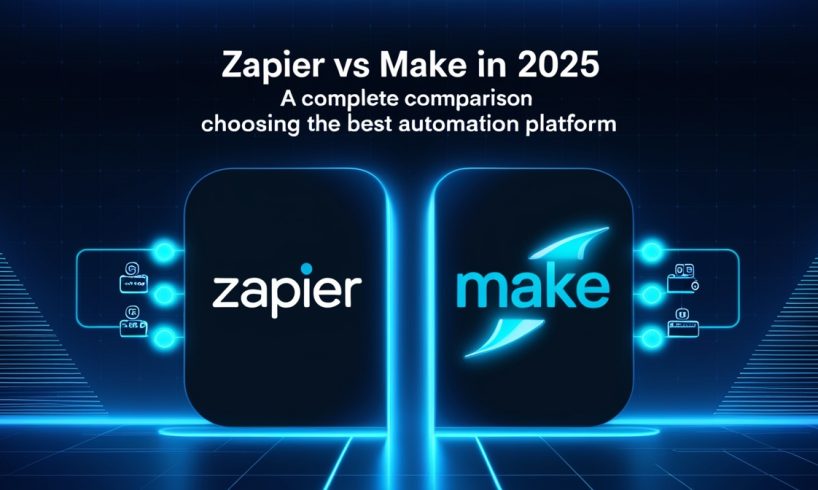
In 2025, automation is no longer a luxury—it’s a necessity. Whether you’re running a small business, managing a marketing campaign, or streamlining operations for an enterprise, tools like Make (formerly Integromat) and Zapier are essential to automate repetitive tasks and connect your favorite apps. But which one is right for you?
Here’s a comprehensive comparison to help you decide between Make and Zapier in 2025.
Overview: What Are They?
- Zapier is a user-friendly, no-code automation tool that connects over 7,000 apps. It allows users to create simple workflows (called Zaps) triggered by events, like receiving an email or a new form submission.
- Make (Integromat) is a visual automation platform offering more granular control, complex logic, and multi-step workflows. Make is often favored by power users and developers who want flexibility without sacrificing usability.
Key Differences in 2025
| Feature | Zapier | Make (Integromat) |
| Ease of Use | Very easy; beginner-friendly | Moderate learning curve |
| Interface | Step-by-step form-based | Visual flowchart (drag-and-drop) |
| App Integrations | 7,000+ | 1,300+ but deep integrations |
| Conditional Logic | Limited to premium plans | Built-in with advanced branching |
| Multi-Step Workflows | Supported | Stronger and more flexible |
| Error Handling | Basic (auto-retries) | Advanced (error paths, custom responses) |
| Pricing | Higher for scale | More affordable, flexible tiers |
| AI & Custom APIs | Strong ChatGPT and AI tool integrations | Deeper API control, ideal for dev teams |
What’s New in 2025?
Zapier:
- Introduced AI Actions, allowing integration with tools like ChatGPT, Claude, and Gemini for dynamic responses.
- Enhanced Zapier Interfaces for building custom internal tools.
- Continued focus on simplicity and speed with auto-generated Zaps via AI prompts.
Make:
- Launched AI-powered module suggestions, reducing the learning curve.
- Improved real-time debugging and logging tools.
- Released native versioning and collaboration features for teams.
When to Choose Zapier
- You want fast, simple automations with minimal setup.
- You work with common SaaS tools like Gmail, Slack, HubSpot, and Calendly.
- You prefer a guided setup experience with less technical complexity.
- You’re looking for AI-enhanced workflows with tools like ChatGPT out of the box.
When to Choose Make
- You need advanced workflows with loops, conditions, and error handling.
- You’re integrating custom APIs or less common platforms.
- You prefer visual workflow design and granular control over each step.
- You’re a developer or a power user needing complex data transformations.
Pricing Comparison (2025 Snapshot)
| Plan Tier | Zapier | Make |
| Free | Basic workflows, 100 tasks/month | 1,000 operations/month |
| Starter | From $29.99/month | From $9/month |
| Pro | $73.50/month+ | $29/month+ (more generous limits) |
Note: Make counts operations (each action), while Zapier counts tasks (per successful step). This affects scalability depending on your use case.
Final Verdict: Which One Should You Choose?
- Go with Zapier if you want a polished, intuitive, plug-and-play automation experience and don’t mind paying a bit more for ease of use.
- Choose Make if you’re handling complex workflows, need advanced logic, or want more bang for your buck as a technical user.
Ultimately, both tools have matured significantly by 2025, and the right choice depends on your workflow complexity, team skillset, and budget.
Pro Tip: Many organizations use both—Zapier for quick wins and Make for intricate workflows. Test each with a free plan before committing.

I am a person who is positive about every aspect of life.I have always been an achiever be it academics or professional life. I believe in success through hard work & dedication.
Technology Blogger at TechnoSecrets.com






